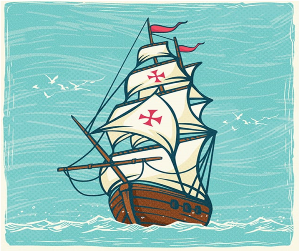October is National Italian American Heritage Month in the United States, a time when millions of Americans of Italian descent celebrate their rich cultural legacy through various events and festivals nationwide. But why should we, as Italian Americans or Americans of Italian ancestry, take an active interest in a heritage month dedicated to our roots?
Why We Have Heritage Months
Heritage Months in the U.S. were created to highlight the contributions of ethnic groups that have shaped the country but were often left out of textbooks and popular culture. These months aren’t about dividing people but about recognizing the unique histories and cultures that make up America. Italians, like other groups, advocated for their own heritage month to ensure their contributions to the country are honored.
Today, nearly every ethnic group has its own heritage month, from Irish to Asian to Italian, as a way of ensuring their histories are shared and respected. However, it’s important to remember that while these months celebrate distinct cultures, they also highlight the ways in which all Americans are connected.
Why We Americans of Italian Ancestry Should Care About Our Heritage
Italian Americans, like many other cultural groups in the United States, have a rich heritage that contributes to the diverse mosaic of American culture. Preserving and celebrating Italian American history and culture is important for several reasons:
1. **Identity and Heritage**
- **Cultural Identity:** Celebrating one's heritage helps maintain a sense of identity and continuity, linking individuals to their ancestors' traditions, values, and histories. This can provide a sense of belonging and pride in one's community.
- **Family Ties:** Many Italian American families place a strong emphasis on the importance of family and preserving their heritage helps strengthen these bonds across generations.
2. **Contribution to American Society**
- **Historical Contributions:** Italian Americans have played significant roles in various aspects of American society, including politics, arts, science, and business. Celebrating these contributions highlights their impact on the nation's development.
- **Cultural Contributions:** Elements such as cuisine, festivals, and religious traditions have become integral parts of American culture, enriching its diversity.
3. **Education and Awareness**
- **Combat Stereotypes:** Like many cultural groups, Italian Americans have faced stereotypes and discrimination. Celebrating their true history and culture helps dispel these stereotypes and educate others about the community’s real character and contributions.
- **History Lessons:** It's important for younger generations to understand the struggles and triumphs of their ancestors, including issues like immigration challenges and integration into American society.
4. **Preservation of Language and Art**
- **Language:** Maintaining the Italian language within families and communities helps preserve an essential element of cultural expression and communication.
- **Art and Literature:** Italian art, whether through music, literature, or visual arts, is a vehicle for cultural expression and continuity.
Why Not Just Be Proud to Be Americans?
Being proud to be American and celebrating one’s ethnic heritage are not mutually exclusive. The United States is characterized by its diversity and the unique blend of cultures that each group brings to the national identity. Embracing one’s roots enhances this mosaic, rather than detracting from a unified American identity.
Issues Facing Italian Americans Today
While Italian Americans are largely assimilated into American society and do not face the same level of discrimination as in the past, there are still relevant issues:
- **Stereotyping:** Media and popular culture often perpetuate narrow stereotypes of Italian Americans, particularly through associations with organized crime or by reducing the culture to simplistic ideas (like food or accents).
- **Loss of Cultural Identity:** As generations assimilate, there’s a risk of losing cultural traditions and language, which are integral to the community's unique identity.
- **Cultural Preservation:** As older generations pass away, there is a challenge in keeping cultural traditions alive and relevant for younger generations who may feel more disconnected from their heritage.
In summary, celebrating Italian American heritage is a way of recognizing and honoring the past, understanding the present, and preserving a unique cultural identity for future generations. It also contributes to a richer, more diverse American society where the whole is greater than the sum of its parts.

.jpg)














.jpg)
